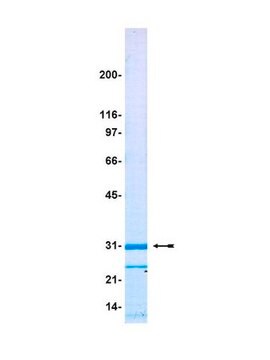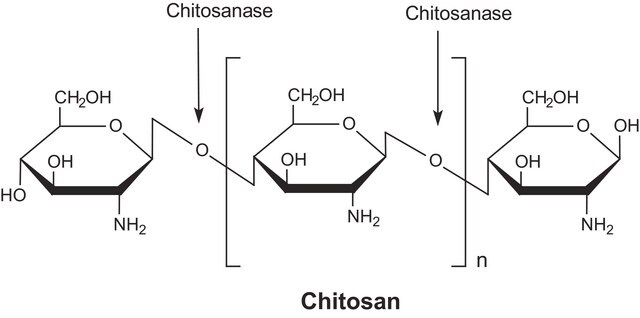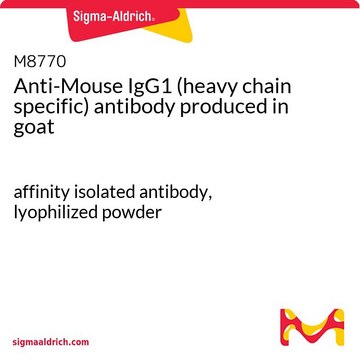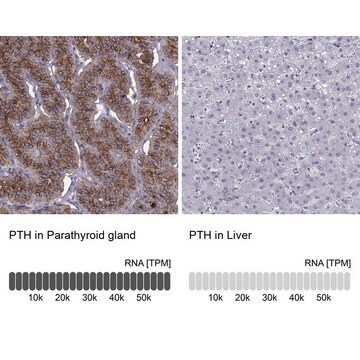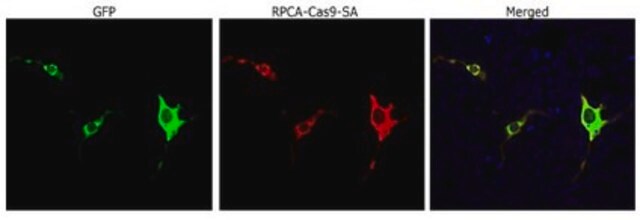17-10199
ChIPAb+ HDAC1 Antibody, rabbit polyclonal
from rabbit
About This Item
ICC
WB
immunocytochemistry: suitable
western blot: suitable
Produits recommandés
Source biologique
rabbit
Niveau de qualité
Clone
polyclonal
Espèces réactives
human
Réactivité de l'espèce (prédite par homologie)
hamster (based on 100% sequence homology), canine (based on 100% sequence homology), mouse (based on 100% sequence homology), rat (based on 100% sequence homology)
Fabricant/nom de marque
ChIPAb+
Upstate®
Technique(s)
ChIP: suitable
immunocytochemistry: suitable
western blot: suitable
Numéro d'accès NCBI
Conditions d'expédition
dry ice
Description générale
The ChIPAb+ HDAC1 polyclonal set includes the HDAC1 antibody, a Normal Rabbit IgG, and control primers which amplify a 88 bp region of ChIP Primers p21. The HDAC1 and negative controls are supplied in a scalable "per ChIP" reaction size and can be used to functionally validate the precipitation of HDAC1-associated chromatin.
Immunogène
Application
Representative lot data.
Sonicated chromatin prepared from untreated or UV treated (6 hrs, 50 joules/m2.) U2OS cells (3 X 10E6 cell equivalents per IP) was subjected to chromatin immunoprecipitation using using 2 µg of either Normal Rabbit IgG, or 2 µg of Anti-HDAC1 and the Magna ChIP® A Kit (Cat. # 17-610). Successful immunoprecipitation of HDAC1 associated DNA fragments was verified by qPCR using ChIP Primers, p21 . (Figure 2). Data is presented as percent input of each IP sample relative to input chromatin for each amplicon and ChIP sample as indicated.
Please refer to the EZ-Magna ChIP A (Cat. # 17-408) or EZ-ChIP (Cat. # 17-371) protocol for experimental details.
Western Blot Analysis:
Representative lot data.
0.5 µg/mL from a representative lot detected HDAC1 in HeLa cells. (Figure 3).
Immunofluorescence Analysis:
2 µg/mL from a representative lot detected HDAC1 in HeLa cells.
Epigenetics & Nuclear Function
Histones
Conditionnement
Qualité
Representative lot data.
Sonicated chromatin prepared from U2OS cells (3 X 10E6 cell equivalents per IP) were subjected to chromatin immunoprecipitation using 2 µg of either Normal Rabbit IgG, or 2 µg of Anti-HDAC1 and the Magna ChIP® A Kit (Cat. # 17-610). Successful immunoprecipitation of HDAC1 associated DNA fragments was verified by qPCR using ChIP Primers, p21 flanking an Sp1 binding site in the human p21 promoter (Figure 1).
Please refer to the EZ-Magna ChIP A (Cat. # 17-408) or EZ-ChIP (Cat. # 17-371) protocol for experimental details.
Description de la cible
Forme physique
Concentration: 0.7 mg/mL
Normal Rabbit IgG. One vial containing 125 µg of rabbit IgG in 125 µL of storage buffer containing 0.05% sodium azide. Store at -20°C.
ChIP Primers p21. One vial containing 75 μL of 5 μM of each primer specific for a region of the human p21 (WAF1/CIP1/CDKN1A) promoter. Store at -20°C.
FOR: CCC ACA GCA GAG GAG AAA GAA
REV: CTG GAA ATC TCT GCC CAG ACA
Stockage et stabilité
Note: Variability in freezer temperatures below -20°C may cause glycerol containing solutions to become frozen during storage.
Remarque sur l'analyse
Includes normal rabbit IgG and primers specific for human p21.
Autres remarques
Informations légales
Clause de non-responsabilité
Code de la classe de stockage
12 - Non Combustible Liquids
Point d'éclair (°F)
Not applicable
Point d'éclair (°C)
Not applicable
Certificats d'analyse (COA)
Recherchez un Certificats d'analyse (COA) en saisissant le numéro de lot du produit. Les numéros de lot figurent sur l'étiquette du produit après les mots "Lot" ou "Batch".
Déjà en possession de ce produit ?
Retrouvez la documentation relative aux produits que vous avez récemment achetés dans la Bibliothèque de documents.
Notre équipe de scientifiques dispose d'une expérience dans tous les secteurs de la recherche, notamment en sciences de la vie, science des matériaux, synthèse chimique, chromatographie, analyse et dans de nombreux autres domaines..
Contacter notre Service technique